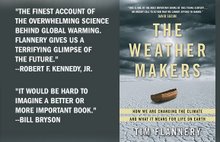FROM a Great Canadian and World Statesman
"A great gulf... has... opened between man's material advance and his social and moral progress, a gulf in which he may one day be lost if it is not closed or narrowed..."
Lester B Pearson
http://nobelprize.org/nobel_prizes/peace/laureates/1957/pearson-lecture.html
Thursday, 14 February 2013
New Textbook recognizes GUN VIOLENCE AS A PUBLIC HEALTH PROBLEM
PREAMBLE: Not much has changed in the basic facts since John Last wrote 25 years ago:
It is unfortunate that the United States, in many respects among the most civilized of nations, contains the powerful interest group, the National Rifle Association (NRA), that often successfully lobbies against legislation designed to make lethal firearms less readily accessible to youthful and irresponsible purchasers and users of handguns that kill about 20,000 Americans, mostly young adult males, every year… and the NRA has even lobbied with some success to prohibit the Centers for Disease Control and Prevention (CDC) from gathering statistics on deaths and injury resulting from guns – not exactly shooting, perhaps, but trying to bind and gag the messenger. Only in the United States is such a state of affairs tolerated.
Reference: Last JM. Public Health and Human Ecology. 2nd edition. Appleton & Lange. Stamford CT 1998. (© 1st edition 1987 & © 2nd edition 1998; now out of print.)
GUN VIOLENCE - A MAJOR PUBLIC HEALTH PROBLEM IN THE UNITED STATES
So what has changed? The terrible toll from gun violence in the US continues to escalate:
According to the US Centers for Disease Control and Prevention, guns kill more than 31,000 people each year in the U.S., including more than 11,000 homicides. The U.S. homicide rate is seven times the average of other high-income countries.[1]
Yet, most public health textbooks from the United States (there are exceptions) give minimal attention to gun violence. For example, in the index of Public Health & Preventive Medicine (15th edition, 2008), the most comprehensive public health textbook published in the US, the word “gun” does not appear at all. By contrast, in the 12th edition (1986), “gun” was allocated six index lines. Why this apparent reduction in the higher educational recognition of a public health problem, when the problem itself has grown 50% in the interim?
Of course, this does not mean that the issue is going unrecognized in the US public health community. Much to the contrary, for example, on the heels of a deadly massacre of primary school children in December (Newtown CT), on January 14th and 15th, the Johns Hopkins University brought together more than 20 global leaders in gun policy and violence—representing the fields of law, medicine, public health, advocacy and public safety—for the Summit on Reducing Gun Violence in America.
Convened by the University, the Summit, which drew over 450 participants, featured presentations of research findings on a range of gun policy and violence topics, including the enforcement of gun laws, guns and public health, second amendment issues and public opinion on gun policy. Contributors met immediately after the Summit to distill the best research and data into a set of clear and comprehensive policy recommendations to prevent gun violence. These recommendations are available to the public.
“The purpose of putting forth these recommendations is to provide a research-based framework for reducing the staggering toll of gun violence in America,” said Summit organizer Daniel Webster, ScD, MPH, director of the Center for Gun Policy and Research at the Johns Hopkins Bloomberg School of Public Health. “Importantly, most recommended policies have broad public support and would not violate constitutional rights.”
Within weeks of the Summit, the Johns Hopkins University Press will publish the book, Reducing Gun Violence in America: Informing Policy with Evidence and Analysis. Collected for the first time in one volume, this reliable, empirical research and legal analysis will inform the policy debate by helping lawmakers and opinion leaders identify the policy changes that are most likely to reduce gun violence in the U.S…. Copies of the book will be delivered to policymakers from across the country, including members of Congress and the Administration.
In the meantime, Oxford University Press has just published Global Public Health – Ecological Foundations, illustrated at the top of the sidebar at right (see last month’s blog for details). This new general textbook book (now available at bookstores) includes a case study on gun control as a community work in progress in the US; the index makes explicit reference not only to gun control but also to the Brady Bill and the adversarial role of the NRA.
Clearly there is a need to enhance public health education regarding this priority topic, at all levels from community to political leadership, especially in the United States.
References:
1. Bloomberg School of Public Health. Johns Hopkins University. Summit on Reducing Gun Violence in America: Informing Policy with Evidence and Analysis. Special Event January 14-15, 2013. http://www.jhsph.edu/events/gun-policy-summit/
2. White F, Stallones L, Last JM. Global Public Health – Ecological Foundations. Oxford University Press. New York 2013. http://www.oup.com/us/catalog/general/subject/Medicine/PublicHealth/?view=usa&ci=9780199751907
INSPIRATIONAL WELCOME ............................... from T.S.Eliot's "Little Gidding"
If you came this way From the place you would come from... It would be the same at the end of the journey...
If you came, not knowing what you came for, It would be the same... And what you thought you came for Is only a shell, a husk of meaning... From which the purpose breaks only when it is fulfilled If at all.


























